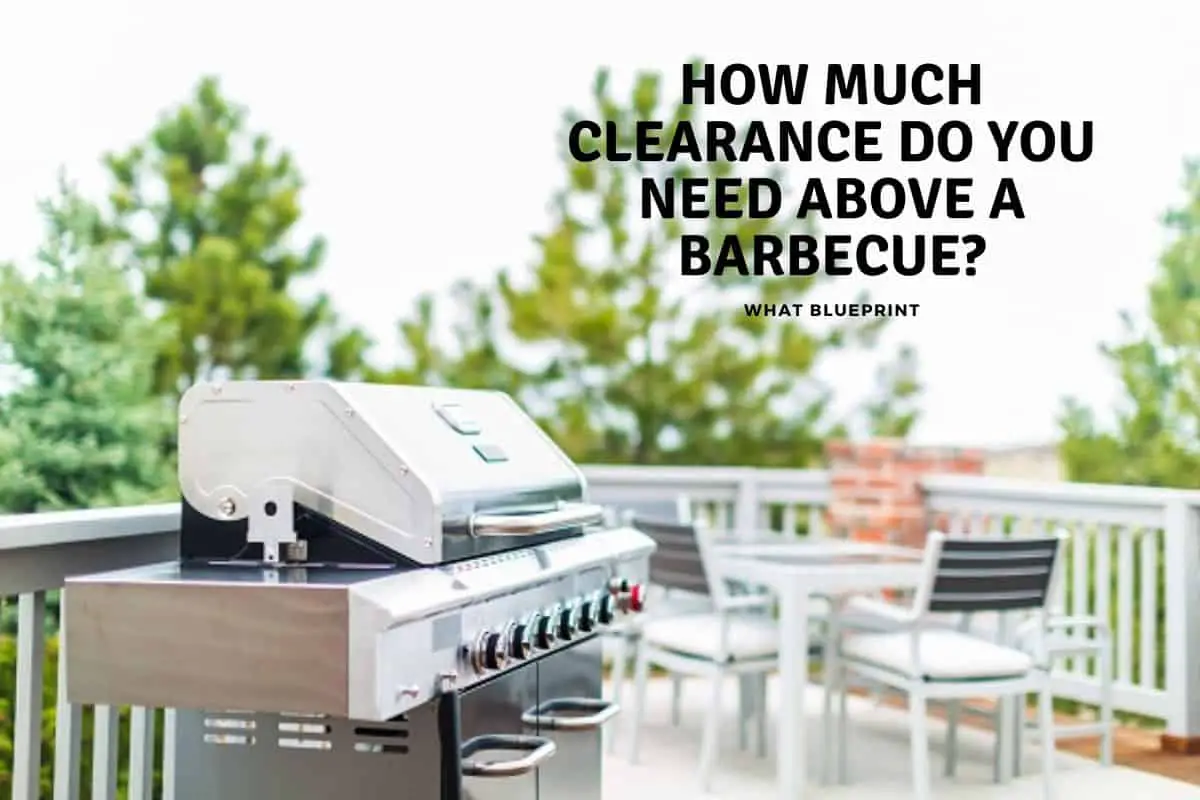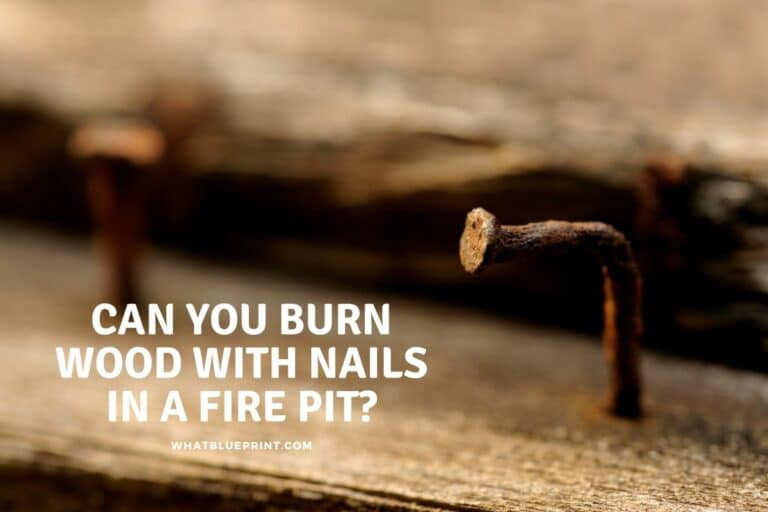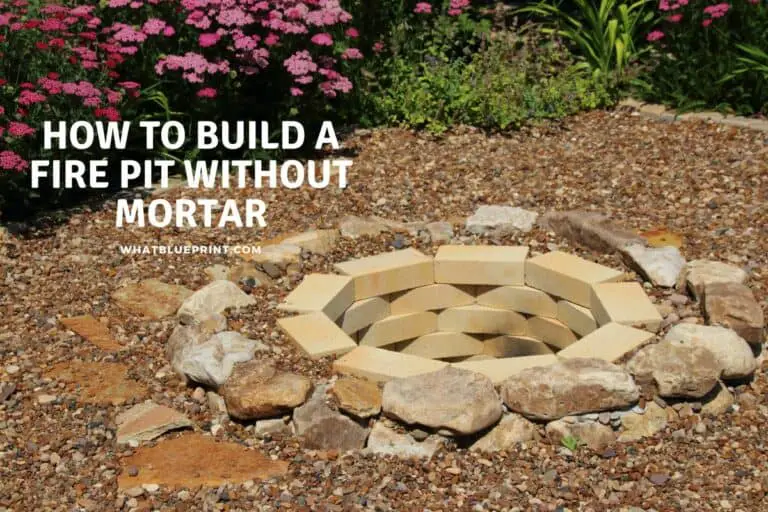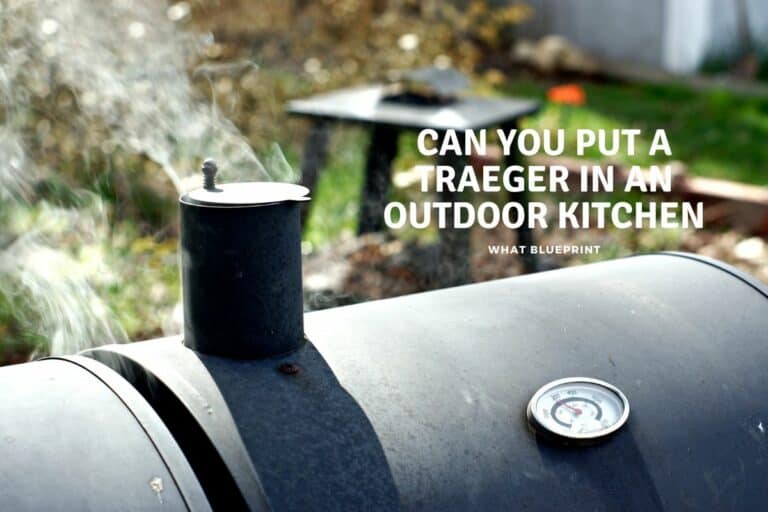How Much Clearance Do You Need Above A Barbecue?
An outdoor kitchen is not complete without a barbecue. The installation of a barbecue is an essential component of an outdoor kitchen that will allow you to enjoy countless cooking experiences. The placement of a barbecue is extremely important, however, as a badly placed barbecue can pose a major fire hazard.
To remain safe, a barbecue should have a minimum of 60” clearance between the main grilling surface and the construction overhead. Suppose the overhead construction consists of combustible material. In that case, it should be properly covered with an exhaust hood to protect it from fire damage.
Ensuring adequate clearance above your barbecue will allow you to enjoy countless barbecues without any issues with fire. There are several other considerations when it comes to barbecues. This includes the amount of clearance on the sides of the barbecue and the placement of the barbecue in relation to other surrounding elements.

How Much Clearance Do You Need Above A Barbecue?
To ensure that your barbecue remains safe, you must ensure a minimum of 60” between the top of the grilling surface and the surface overhead. While it is not advisable to use any combustible materials above a barbecue, there are certain circumstances in which this is unavoidable.
As a result, any barbecue placed underneath any overhead construction made of combustible material will require the addition of an overhead venting hood. This fire-safe venting system will ensure that the overhead construction is fully protected from heat and flames.
In addition to the clearance above a barbecue, there are recommendations regarding the proximity of other items concerning the barbecue. There should be a minimum of 20” space to the rear of the barbecue. When it comes to either side of your barbecue, ensure a minimum of 7” of clearance between the barbecue and any combustible material.
If a vinyl siding is located near your barbecue, ensure 24” clearance at a minimum.
Any other structures near your barbecue should maintain a minimum of a ten-foot distance. This will ensure that the house and any other items cannot catch fire due to the barbecue.
Positioning A Barbecue
Several considerations go into the positioning of a barbecue. The position of your barbecue must allow for sufficient ventilation to ensure heat and smoke dissipate effectively.
It’s also important to consider the wind exposure that the barbecue may endure. This wind will play a significant role in the barbecue’s success. In addition, consider the proximity of the barbecue to human foot traffic. You should also ensure that gas lines and electrical connections are kept as short as possible. They should also be kept away from any possible source of heat.
Your barbecue should always be placed in an area that is properly ventilated. The area should allow sufficient room for evacuation if a fire occurs.
A barbecue should not be placed in an enclosed area such as a garage or shed. Most importantly, a barbecue should never be placed under unprotected combustible construction.
The prevailing wind direction is extremely important for barbecue placement. This is especially true of gas grills. If possible, place the grill so that the prevailing wind blows towards the front of the grill. This will ensure that hot air is successfully vented through the back of the grill. It will also ensure that smoke is not blown toward the person using the grill.
If the placement of the barbecue cannot be changed and the back is facing the prevailing wind, construct a windbreak to protect the rear side of the grill. This will ensure that wind cannot blow into the rear exhaust vent of the grill, as this can cause problems with the airflow through the grill.
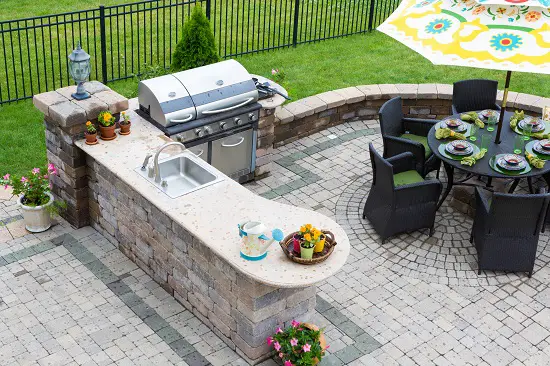
Electrical Considerations For Outdoor Kitchens
An outdoor kitchen requires significant electrical infrastructure for it to remain successful. Electricity is inherently dangerous if not planned and implemented carefully.
In your outdoor kitchen, electrical safety is a crucial factor to consider. Suppose you don’t have much experience with electrical installations. In that case, it will be preferable for you to hire a professional to do the job. Doing this ensures that your outdoor kitchen is risk-free and won’t endanger you, your family, or the people who use it with you.
Every electrical installation in your outdoor kitchen will need to be properly licensed. To keep your outdoor kitchen installation on the right side of the law, it’s crucial to adhere to the local rules. An experienced electrician is familiar with and knowledgeable about the codes governing electrical installations for outdoor kitchens.
Consideration should be given to certain GFCI outlet regulations. An outdoor kitchen needs to be connected to your mains with its own GFCI circuit board. If necessary, this will enable you to reset the entire system from inside your home.
To guard against any potential for shock, a GFCI system is necessary. These are necessary for any activity involving water. This outlet will track how much electricity is used in a specific circuit. The outlet will immediately cut off if any imbalance is found.
This preventative approach reduces the risk of fires and electric shock.
Other Utilities For Outdoor Kitchens
Other services besides power will be needed for outdoor kitchens. The first thing your outdoor kitchen needs is plumbing. Without a sink, an outdoor kitchen is simply a bad idea. In light of this, you will need to have enough plumbing set up to incorporate a sink into the layout of your outdoor kitchen.
You might need to insulate the pipes if you opt to run hot water to your outdoor sink. You should always get professional advice when contemplating the plumbing for your outdoor kitchen to achieve the best outcomes.
Another utility to consider for your outdoor kitchen is gas. You will profit from having an effective gas installation for your outdoor kitchen unless you just utilize charcoal for your grill. Assume your area has access to natural gas. The grill station in your outdoor kitchen can then have a gas line linked directly to it.
Simply plan to install two propane tanks if there isn’t any natural gas available where you live so that you will always have extra gas in case your tank runs out. The last thing you want to happen while cooking a delicious meal in your outdoor kitchen is for your gas to run out.
We have hundreds of articles on outdoor kitchens for you on the site you cn check them out below or with a search.
Conclusion
Having a significant amount of clearance above your BBQ is important to ensure that any combustible material above the barbecue is not in danger of catching fire. Even non-combustible materials should not be placed too close above a barbecue.
When combustible materials are placed above a barbecue, it is essential to have an exhaust hood in place to protect the construction overhead.
Sources
- https://www.nyu.edu/about/news-publications/news/2021/november/wendy-suzuki-on-good-anxiety.html
- https://producthelp.fisherpaykel.com/nz/Grill/Built-In_Grills/BGB48-BQR/User_Guide_BGB48-BQR/03_Locating_Grill_and_Built-in_Clearances
- https://pdf.lowes.com/productdocuments/5222482e-ea79-4a47-9c66-1909ce3b4b2b/10868166.pdf

